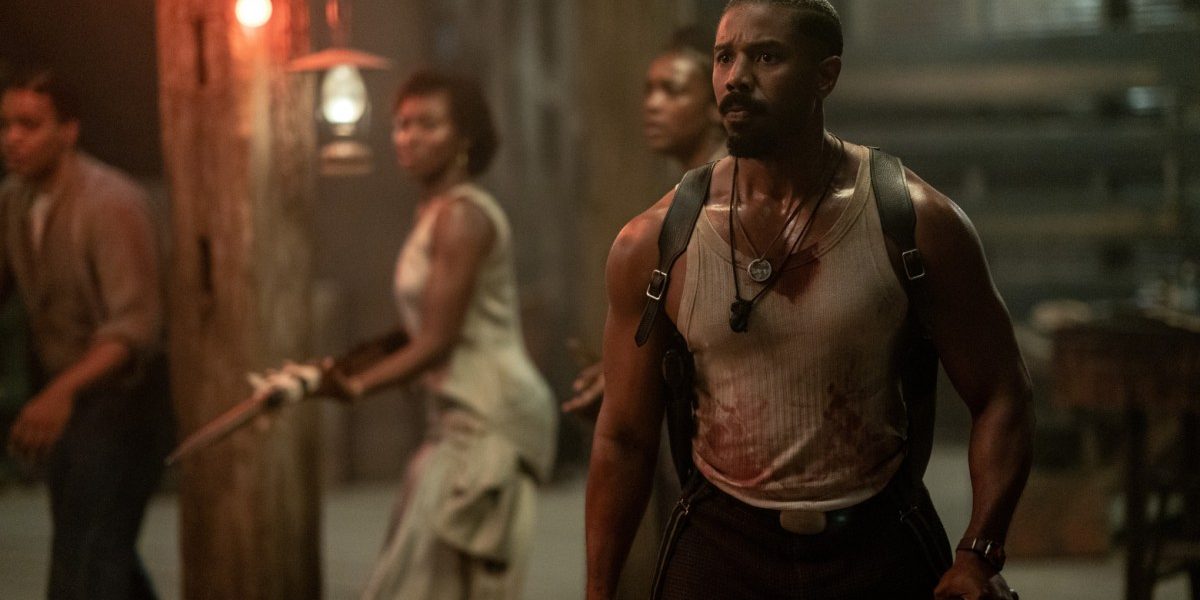Ryan Coogler stands out as one of the most exceptional talents in the film industry, and he reaffirms this with his latest creation, Sinners. This film, which masterfully blends vampire lore with horror and action, marks his first foray into a wholly original narrative. I eagerly anticipate more opportunities for Coogler to showcase his immense creativity. While his previous works, including Fruitvale Station, based on a true story, and the Creed franchise, which revives the classic Rocky saga, are outstanding, Sinners presents unique characters and a fresh storyline. Once again, Michael B. Jordan delivers a riveting performance, establishing a collaborative dynamic reminiscent of the legendary partnership between Robert De Niro and Martin Scorsese. Together, they create a thrilling cinematic experience that captivates the audience.
The concept of Coogler collaborating with Jordan is intriguing, especially as he takes on the challenge of portraying twin brothers, Smoke and Stack, both played by Jordan in what many regard as the pinnacle of his career. As they return to their roots after being away for years, the film dives deep into the realms of horror for the first time, revealing a stylish, blood-soaked Southern Gothic narrative. This film not only signifies a pivotal point in Coogler’s career but also emphatically calls for a new chapter to be written. Set against the backdrop of the American South, laden with an atmosphere of foreboding, this vampire tale serves as both a genre exercise and a vivid audiovisual fever dream. While it struggles in its slower first act, the film truly comes alive when night descends and the genuine horror surfaces, delivering a second half that is as chilling as it is exhilarating.
Coogler opens Sinners with a reflective, naturalistic atmosphere that draws parallels to his breakout film, Fruitvale Station. He takes the time to explore the complex relationships between the brothers and their friends, past lovers, and local businessmen, meticulously crafting the dusty, lived-in world they inhabit. This earnest effort to ground the film in emotional reality is admirable, yet it struggles to resonate fully. The stakes feel somewhat scattered, and the tension remains understated. The intimate realism that enriched Fruitvale Station seems misaligned with the pacing of this story, which aims to gradually build dread. By the conclusion, the significance of this initial act becomes clearer, though the execution leaves room for improvement.
Then night falls, and everything changes.
With the onset of the second act, Sinners undergoes a remarkable transformation. It’s as if Coogler has been subtly winding a jack-in-the-box, and the lid finally bursts open, unleashing the film’s true potential. The film transitions into a breathtaking, mesmerizing dance sequence that left me utterly speechless. The camera work is nothing short of extraordinary, guiding us through the setting and showcasing the evolution of dance across various cultures and epochs. Coupled with an exceptional score, this scene stands out as one of the best-directed moments of the year. There are several instances in this film that justify the necessity of experiencing it in IMAX, and this is undoubtedly one of them.
Autumn Durald Arkapaw’s cinematography shifts into a higher gear during this sequence. Her lens captures every movement with a dreamlike quality, employing shadow and silhouette to create unforgettable imagery. She excels in portraying everything from the visually stunning dance sequences to the intricate details that enrich the narrative. Part of the reason the first act feels sluggish is that it takes a bit too long for the film to embrace its vampire essence. However, once it does, it holds nothing back. The vampires’ eyes radiate a chilling glow, and there are several clever moments where, when concealing their true identities, their faces are illuminated in a way that emphasizes the darkness of their eyes. These simple yet effective choices significantly enhance the film’s overall impact.
Despite the early missteps, the film’s rhythm becomes increasingly captivating. Coogler masterfully balances elements of horror with emotional depth, spectacle with personal moments, using the genre as a vehicle to delve into profound questions surrounding guilt, identity, and the legacy of violence. A rich metaphor unfolds—portraying vampirism as a cycle of generational trauma and addiction—yet Coogler skillfully avoids overwhelming the audience with this theme. He allows the visuals and performances to convey the underlying messages, trusting viewers to grasp the subtext on their own.
Moreover, the film presents a compelling take on the vampire genre. Recent releases like Nosferatu, Abigail, and The Last Voyage of the Demeter have explored similar themes, but once the movie fully embraces its identity, it introduces an element reminiscent of a zombie movie. However, these vampires are not mindless beasts; they retain their humanity, albeit twisted. Their actions are both clever and malevolent. The film also incorporates traditional vampire lore, including the significance of garlic, wooden stakes, and the crucial notion that vampires cannot enter without an invitation. These elements help Sinners stand out, making it feel refreshingly original. Coogler’s sharp eye for social commentary, combined with his ability to deliver an unmissable cinematic experience, elevates Sinners beyond typical horror fare. With remarkable performances from Michael B. Jordan and Hailee Steinfeld, this film is poised to be remembered as one of the best horror movies of the year.
RATING: 8/10 – A Compelling Cinematic Experience
According to ComingSoon’s review criteria, a score of 8 signifies a film that is “Great.” While minor issues exist, this rating indicates that the artistic vision successfully achieves its objectives and leaves a lasting impression on the audience.
Disclosure: ComingSoon attended a press screening for our review of Sinners.






